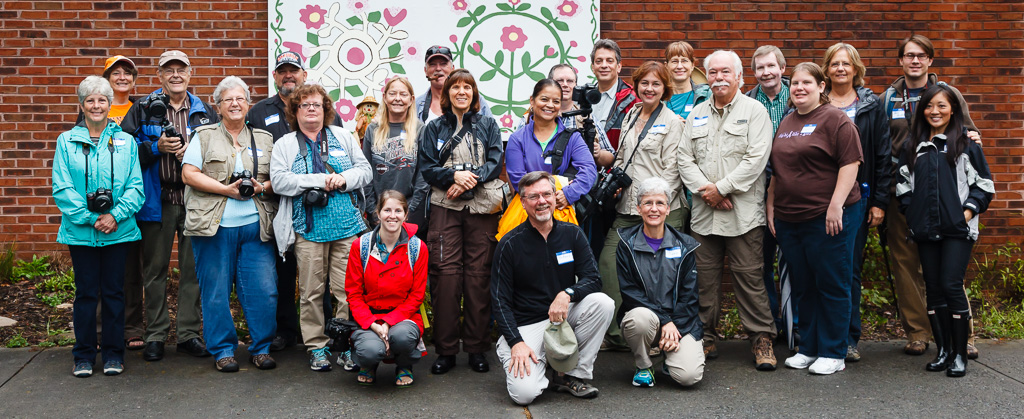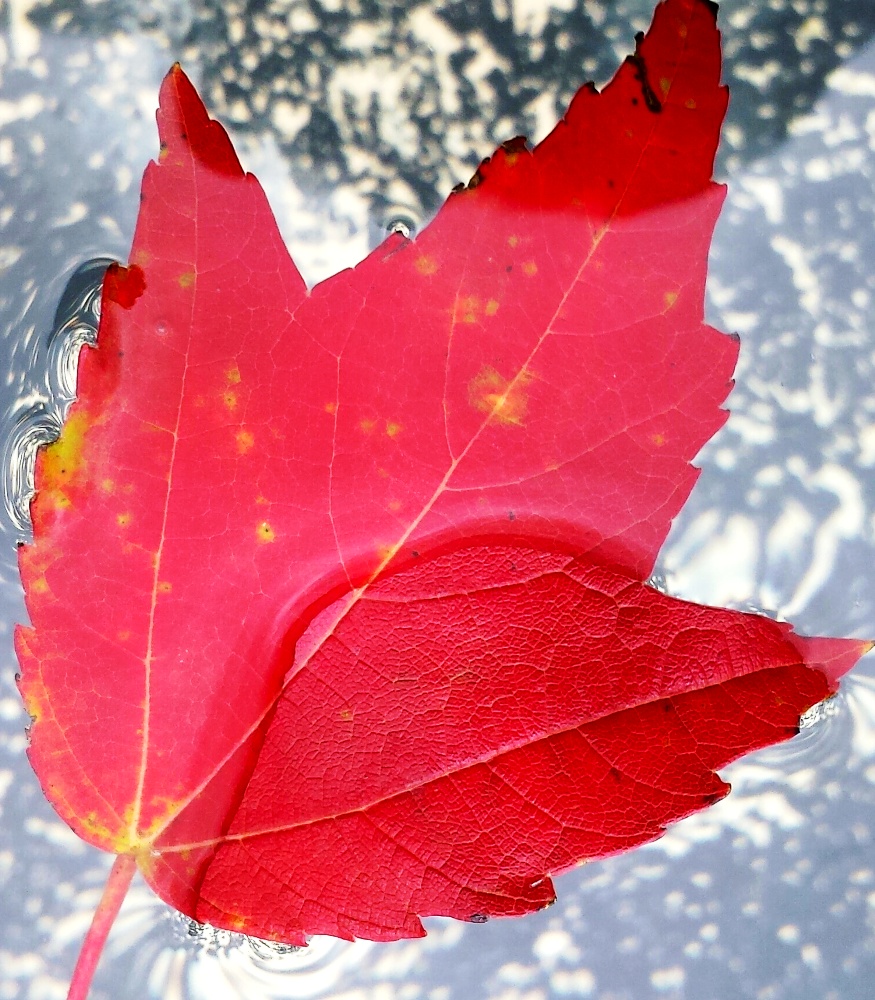 |
| Some of the Photowalk Crew |
The photo below is not mine. It was taken on the photowalk in Jonesborough by one of the photographers/walkers in the photo above. Each of the photographers who participated in the walk could pick their favorite photo and submit it to be judged against all the other favorites from that day. The photographer with the best photo won a full year membership to Kelby One online training (a $249.00 value). That's a pretty nice prize. As the walk leader I had to choose what I thought was the best photo of the day. This is never an easy task because they are all good and each one is different. This year I picked a red leaf in water as the best photo.
 |
| Leaf in Water Fountain - Prize Winner |
So what makes this a good photo? Of course, there is a lot of subjectivity in picking a photo. What I like may not do anything for you. The thing is, photography is art and everyone has different things they like and appreciate in art. Here's some things I thought this one had going for it.
Color and color contrast - red is a powerful color and one that people's eyes are naturally attracted to. This photo has a strong dominate red but also has a slightly blue tint in the background, creating a nice color contrast between the red and blue.
Angle - the fact that the photographer thought to angle the camera so the leaf points at an angle makes this a more dynamic photo. If the leaf had been vertical, horizontal or placed in the center of the frame it would have felt static and uninteresting.
No distracting elements - simple, just a leaf in water. There are no other things, such as twigs or other leafs, in the photo. Generally the simpler the photo the better.
Sharpness - the eye is drawn to the sharp parts of a photo and the part of the leaf that is out of the water is nice and sharp. You can see the interesting texture in that part of the leaf. That part of the leaf is also placed at one of the power point intersections created by dividing the photo into three vertical and horizontal sections (rule of thirds).
Besides the composition of this photo, I like the fact that the photographer found this. An eye for seeing photos before taking them is a skill that not everyone has. My wife June has a good eye for photos, which is why my photos are always better when she comes along with me.
Some of you may be thinking that this is not a perfect photo, and you're right. The top of the leaf was cut off and there is a circular shadow in the top, maybe from the photographer. The thing is there is no perfect photo. In my opinion, this is a very good photo. I wish I had taken it.
So a good photo is made by a photographer with a good eye who can create an interesting composition. What about photo gear? What kind of camera was used? In photography circles there is always some friendly jabs between the Canon and Nikon shooters. Lately, there have been some Sony and Fuji shooters showing up to claim the top gear of the year/month/day award. What about this one?
Because of the info embedded in the digital photo I was able to look up some interesting facts about the photo. It was taken with a shutter speed of 1/145 second, at ISO of 50, and an f-stop of 2.2. This was taken with a 13 mega pixel model SCH-1545 digital camera. Not familiar with that one? Click here for info on the camera. That's right, it was taken with a cell phone!
Now, I'm not suggesting we all go out and trade our cameras in on cell phones. I am saying the most important piece of photography gear you can have is not the hardware you hold up to your eye. It's what's behind your eyes that makes a good photographer. Photography is all about light, seeing, and knowing how to compose a photo in such a way that it is pleasing to view. The good news is you can easily upgrade your photographic mind by taking classes, workshops, online training or just hanging out with other photographers. Being with other photographers and practicing are the two best investments you can make.





